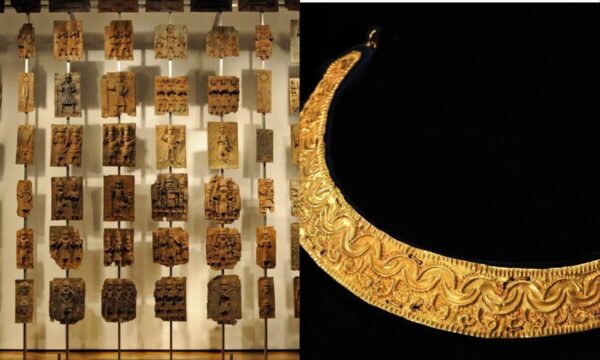In the National Museum of Egyptian Civilization (NMEC), where Egypt’s regal figures from the ancient past lay to rest, a visitor to the Cairo facility could never imagine that the gilded coffin of Nedjemankh, located on the ground floor, could reflect a perfectly concocted story where fame, corruption and theft of Africa’s cultural heritage intertwine.
Yet, the coffin of the ancient priest, which was acquired by the prestigious Metropolitan Museum of Art (MET) for almost $4 million in 2017, was promptly given back to Egypt when the truth about the coffin’s documentation and provenance circulated online. The incident marked a success for Egypt, which has been vocal and active in the repatriation of its cultural artifacts from museums and collections in Western countries, particularly in recent years.

However, Egypt is only one of several African countries carving the path — nations across the continent are making significant strides in reclaiming their heritage and preserving their cultural identity.
Ghana has been championing a remarkable successful streak in repatriating its cultural jewels. Last month, the Fowler Museum at the University of California, Los Angeles repatriated looted objects belonging to the Asante kingdom, which had been forcibly taken by British forces during the 1874 Sagrenti War— after 150 years since the looting. The UCLA museum returned seven artifacts, including a royal necklace (known as a gorget), an ornamental chair, and an elephant tail whisk.
“Have you ever wondered how these African objects ended up in museums?” Kenyan researcher and visual artist Jim Chuchu asked during a 2021 TEDMonterey talk in California.
“Some were bought by traders, and tourists,” Chuchu said. “Some were gifts exchanged in acts of friendships, and some were excavated in archaeological digs. But then there are many others that were looted during raids, confiscated by colonial forces, and stolen at gunpoint.”
In 2022, Reuters, citing French art historians, reported that almost 90 percent of Africa’s cultural heritage is believed to be homed in Europe. Indeed, from the British Museum (London) to the Musée du quai Branly – Jacques Chirac (Paris), almost every internationally acclaimed museum is punctuated by an exhibition featuring African artifacts, with usually no information made public as to how the artifacts were acquired.
It is precisely because these museums retain thousands of African artifacts in their magazines or on public display that African governments are made aware of their location and can raise questions regarding their provenance and acquisitions.
One such example bringing to light documentation efforts in the hopes of cultural artifact repatriation is the International Inventories Programme (IPP), an international research and database project that has managed to uncover more than 30,000 Kenyan artifacts located in institutions worldwide.
Supplementing research efforts, Kenyan authorities have been facilitating, for the last decade, the gradual repatriation of important artifacts that retain a clear link to African cultures and peoples.
Take vigango — ancestor veneration sculptures that represent the spirits of deceased members of the Mijikenda peoples of the southeastern Kenya coast. Many of these vigango, located in various museums such as the Denver Museum of Nature and Science or the Illinois State Museum, have been successfully repatriated to Kenya after many years of negotiation and reinterpretation of what these cultural relics mean to contemporary peoples.
Moreover, in 2022, Germany returned more than 20 Benin Bronzes to Nigeria.
Similarly, 26 artifacts looted by French soldiers at the end of the 19th century were also handed back to Benin authorities in 2021 in a ceremony featuring President Patrice Talon.
“This return is a testimony to what we have been, a testimony that we existed before, a testimony to what we have known,” Talon stated, according to Reuters.
For more than ten years, Nigerians also have called for the return of the bronzes, but Western countries and museums have only just started to heed their plea.
By all accounts, and out of any continent, African nations seem to be the most susceptible to the illegal trade in cultural property. The pace of the repatriation of Africa’s cultural artifacts is painstakingly slow, even though an international convention was adopted more than 50 years ago to prevent the illicit traffic of cultural property.
The endeavor has become more complicated due to discussions over provenance, logistical blunders, and negotiations with Western museums, which depend on their collections for traffic and, often, profit.
Nonetheless, in their relentless pursuit to restitute relics, African governments have endured on a path to reverse the obliteration of Africa’s cultural memory.


